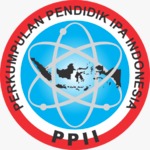Analysis of The Relationship Between Cognitive Style and Creativity of Pre-Service Physics Teachers
DOI:
https://doi.org/10.29408/kpj.v7i3.24198Keywords:
Cognitive Style, creativity, Pre-Service Physics TeachersAbstract
This research aims to examine the relationship between cognitive style and creativity of prospective physics teachers in terms of two domains of creativity, namely personality and product. This research is quantitative and descriptive. The population of this study was 60 prospective physics teachers who were studying at Mataram University, Indonesia with a sample size of 40 people selected using the Simple Random Sampling technique. The instruments used in this research consisted of the standard Group Embedded Figures Test (GEFT) instrument, the Creative Personality test instrument, and the product creativity observation sheet. GEFT is used to identify differences in the cognitive styles of prospective physics teachers. The Creative Personality test instrument is used to determine the creativity of prospective physics teachers in terms of the aspects of fluency, flexibility, originality, and elaboration. Meanwhile, the observation sheet is used to assess the creativity of prospective teachers in producing products in the form of learning media in terms of novelty, utility, aesthetics, and authenticity. The results of the data analysis show that there is a relationship between cognitive thinking and the creativity of prospective physics teachers. Prospective physics teachers who have the FI cognitive style tend to have a better Creative Personality compared to FD (FI=1.94 > FD=1.44). However, on the contrary, the creativity of products carried out collaboratively shows that the FD group tends to get a better creative score (FI=3.01 < FD=3.41).
References
Altun, A., & Cakan, M. (2006). Undergraduate Students' Academic Achievement, Field Dependent/ Independent Cognitive Styles and Attitude toward computers. Educational Technology & Society, 9(1), 289-297. Retrieved from: https://eric.ed.gov/?id=EJ836711
Amabile, T.M (1983). The Social Psychology of Creativity: A Componential Conceptualization, Journal of Personality and Social Psychology, 45: 357-376. Doi: https://doi.org/10.1037/0022-3514.45.2.357
Busyairi, A & Sinaga, P., (2021). Pengembangan Instrumen Tes Model Ideation-Explanation Untuk Mengukur Kemampuan Berpikir Kreatif Dalam Pemecahan Masalah. Jurnal Pijar MIPA, 16 (1), 57-63. Doi: 10.29303/jpm.v15i5.1700
Busyairi, A., Zuhdi, M., & Makhrus, M., (2022). The Analysis of Concept Mastering and Creative Thinking Skills of Prospective Physics Teachers Post-Online Learning During the Covid-19 Pandemic, Jurnal Ilmiah Profesi Pendidikan, 7 (4b), 2580- 2587. Doi: https://jipp.unram.ac.id/index.php/jipp/article/view/958
Clegg, B. dan Brich, P. (2006). Instan Creativity: 76 Cara Instan Meningkatkan Kreativitas. Jakarta: Erlangga.
Corazza, G.E. (2016). Potential Originality and Effectiveness: The Dynamic Definition of Creativity. Creativity Research Journal, 28(3); 258–267. Doi: https://doi.org/10.1080/10400419.2016.1195627
Ford, N. & Chen, S.Y. (2001). Matching/ mismatching revisited: An empirical study of learning and teaching styles. British Journal of Educational Technology, 32 (1): 5-22. Doi: 10.1111/1467-8535.00173
Guilford, J. P. (1950). Creativity. American Psychologist, 5(9), 444-454 Doi: https://doi.org/10.1037/h0063487
Guilford, J.P. (1967). Creativity: Yesterday, today and tomorrow. The Journal of Creative Behavior, 1(1), 3–14., Doi: https://doi.org/10.1002/j.2162-6057.1967.tb00002.x
Isaksen, S. G. (1995). on the conceptual foundations of creative problem solving. a response to magyary beck. Creative of Inovation Managemen, 4 (1), 1628–1635. Doi: https://doi.org/10.1111/j.1467-8691.1995.tb00202.x
Jones, LCR., Tyrer, J.R., & Zanker, N. P. (2013). Applying laser cutting techniques through horology for teaching effective STEM in design and technology. Design and Technology Education, 18 (3), 21–34. http://files.eric.ed.gov/fulltext/EJ1119599.pdf
Kharkhurin, A.V., (2014). Creativity.4in1: Four-Criterion Construct of Creativity. Creativity Research Journal, 26 (3); 338–352. Doi: https://doi.org/10.1080/10400419.2014.929424
Kozhevnikov. M. (2007). Cognitive Styles in the Context of Modern Psychology: Toward an Integrated Framework of Cognitive Style. Psychological Bulletin. 133 (3): 464–481. Doi: 10.1037/0033-2909.133.3.464
Kusuma, Y. (2010). Creative Problem Solving. Tanggerang: Rumah Pengetahuan.
Lei, W.; Deng, W.; Zhu, R.; Runco, M.A.; Dai, D.Y.; Hu, W. (2020). Does Cognitive Style Moderate Expected Evaluation and Adolescents’ Creative Performance: An Empirical Study. Journal of Creative Behavior, 55, 120–129. Doi: https://doi.org/10.1002/jocb.439
Munandar, S.C.U. (1977). Creativity and Education. Disertasi Doktor, Universitas Indonesia. Jakarta: Departemen Pendidikan dan Kebudayaan.
Onyekuru, B.U., (2015). Field Dependence-Field Independence Cognitive Style, Gender, Career Choice and Academic Achievement of Secondary School Students in Emohua Local Government Area of Rivers State. Journal of Education and Practice, 6 (10): 76-86. Doi: https://files.eric.ed.gov/fulltext/EJ1081668.pdf
Runco, M. A., & Jaeger, G. J. (2012). The Standard Definition of Creativity. Creativity Research Journal, 24 (1); 92–96. Doi: https://doi.org/10.1080/10400419.2012.650092
Runco, M.A.; Acar, S. (2012). Divergent thinking as an indicator of creative potential. Creativity Research Journal, 24 (1), 66–75. Doi: https://doi.org/10.1080/10400419.2012.652929
Silver & Edward A. (1997). Fostering creativity through instruction rich in mathematical problem solving and thinking in problem posing. International Reviews on Mathematical Education, 29 (3), 75-80. Retrieved from: https://link.springer.com/article/10.1007/s11858-997-0003-x
Treffinger, J. T., Isaksen, S. G. dan Dorval, B. S. (2006). Creative problem Solving. Texas: Prufrock Press Inc.
Ulya, H., (2015). Hubungan Gaya Kognitif dengan Kemampuan Pemecahan Masalah Matematika Siswa. Jurnal Konseling, 1(2): 2460-1187. Doi: https://doi.org/10.24176/jkg.v1i2.410
Verawati, Y., Supriatna, A., Wahyu, W. & Setiaji, B. (2019). Identification of student’s collaborative skills in learning salt hydrolysis through sharing and jumping task design. International Conference on Mathematics and Science Education (ICMScE), Journal of Physics: Conference Series, 1-5. Doi: 10.1088/1742-6596/1521/4/042058
Wang, C. W. dan Horng, R. Y. (2002). The effects of creative problem solving training on creativity, cognitive type and R & D performance. The Journal of Research, Technology and Iinnovation Management, 32 (1), 35-45. Doi: https://doi.org/10.1111/1467-9310.00237
Ward, T.B.; Kennedy, E.S. (2017). Creativity research: More studies, greater sophistication and the importance of “big” questions. Journal Creative Behavior, 51, 285–288. Doi: 10.3390/bs12070212









